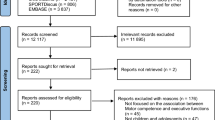Abstract
Numerous studies on adults have confirmed that the cerebellum has a role in processing higher brain functions, and evidence of this role has emerged more recently in developmental age as well. Various types of congenital lesion are associated with neuropsychological impairments and behavioral changes that can sometimes even give rise to a picture of autism. Acquired cerebellar lesions (especially tumors and stroke) in children of normal intelligence have enabled different neuropsychological profiles to be identified, depending on the cerebellar site involved. In Chiari malformation, the cerebellar structures are squeezed and crowded inside the posterior fossa and along the time this could generate various kinds of cognitive and behavioral disorders. Currently available data remain inconclusive, however, and prospective longitudinal studies on sizable series will be needed to ascertain whether and to what degree Chiari malformations may negatively affect mental functioning in developmental age.
Similar content being viewed by others
References
Strick PL, Dum RP, Fiez JA (2009) Cerebellum and nonmotor function. Annu Rev Neurosci 32:413–434
Schmahmann JD (2004) Disorders of the cerebellum: ataxia, dysmetria of thought, and the cerebellar cognitive affective syndrome. J Neuropsychiatry Clin Neurosci 16:367–378
Schmahmann JD, Sherman JC (1998) The cerebellar cognitive affective syndrome. Brain 121:561–579
Bolduc M, Limperopoulos C (2008) Neurodevelopmental outcomes in children with cerebellar malformation: a systematic review. Dev Med Child Neurol 51:256–267
Riva D, Giorgi C (2000) The cerebellum contributes to higher functions during development. Brain 123:1051–1061
Steinlin M, Imfeld S, Zulauf P, Boltshauser E, Lövblad K, Ridolfi Lüthy A, Perrig W, Kaufmann F (2003) Neuropsychological long-term sequelae after posterior fossa tumour resection during childhood. Brain 126:1998–2008
Aarsen FK, Van Dongen HR, Paquier PF, Van Mourik M, Catsman-Berrevoets CE (2004) Long-term sequelae in children after cerebellar astrocytoma surgery. Neurology 62:1311–1316
Levisohn L, Cronin-Golomb A, Schmahmann JD (2000) Neuropsychological consequences of cerebellar tumour resection in children. Brain 123:1041–1050
Novegno F, Caldarelli M, Massa A, Chieffo D, Massimi L, Pettorini B, Tamburrini G, Di Rocco C (2008) The natural history of the Chiari Type I anomaly. J Neurosurg Pediatr 2:179–187
Cianchetti C, Sannio Francello G (1997) Test di valutazione del linguaggio livello prescolare. Erikson, Trento
Conflict of interest
The authors declare that there is no actual or potential conflict of interest in relation to this article.
Author information
Authors and Affiliations
Corresponding author
Rights and permissions
About this article
Cite this article
Riva, D., Usilla, A., Saletti, V. et al. Can Chiari malformation negatively affect higher mental functioning in developmental age?. Neurol Sci 32 (Suppl 3), 307–309 (2011). https://doi.org/10.1007/s10072-011-0779-x
Published:
Issue Date:
DOI: https://doi.org/10.1007/s10072-011-0779-x




